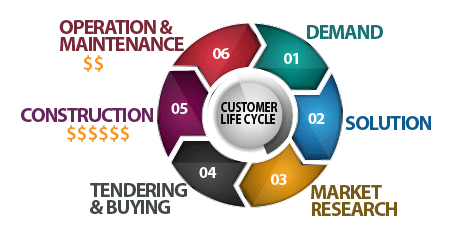
Forrester sees 2019 as a year of digital transformation pragmatism. "Pragmatism" is a signal that the learning curve is behind us, and it is a perfect time to capitalize on the experience of others.
Today business transformation (DT) is not a choice. It draws a deep divide between the smart and the dumb or as Siemens CEO Joe Kaeser put it - between binary one and zero. Unlike the first, the binary zero has zero chance to survive.
The ultimate goal of DT is creating digital business. Zeus Kerravala and Lawrence C. Miller in their book "Digital Transformation for Dummies" give the following definition of digital business.
"Digital business is the application of technology to build new operating models, processes, software, and systems by leveraging the convergence of people, business, and things. These advances are creating new product and service opportunities, as well as transforming business operations, enabling companies to generate more revenue, gain greater competitive advantage, and achieve higher efficiency."
As a digitally minded person, I find this terse definition all-embracing. For dummies it is totally indigestible and scary. Reason? These words mean different things in non-digital world. To reduce this definition to practice, interpretation is needed.
Undoubtedly, it is business-specific: DT scenario for water utilities cannot be readily applied to engineering services providers or original equipment manufacturers. Nevertheless, all the scenarios show generic DT traits. Their number grows with the DT maturity. And this is the most disturbing news about DT, reflected in popular "Grow or Die" maxim.
My selection of DT traits is biased towards the companies I know. The traits implementation does not turn the business into digital, but yields feedback needed to select the shorted way.
Enforce "Google first" priority
Not long ago I had a talk with an experienced guy from marketing department of the EPC contractor about the company website. All my basic questions about the site metrics – the number of daily clicks, the bounce rate, and the most visited pages – were left unanswered.
Instead, this company keeps spending its marketing budget and resources on exhibitions, conferences, forums, and articles in web magazines with meager readership (comparing to LinkedIn or Facebook). This strategy does not work anymore.
Switching to Google cannot be done overnight. You will work hard for 3 - 5 months without any sign of hope from Google. It does not disregard you; it thinks and analyzes. During this time ask not what Google can do for you, ask what you can do for Google to introduce you in a unique way to the outer world.
Instill "Site is me" mindset
Recently I checked the metrics of three engineering companies engaged in water treatment using Alexa.com. Bounce rates were within 60 – 75%. Roughly, it is a percentage of dissatisfied visitors. You may ask – by the website or by the company? Psychology says both. Customers are inclined to extend the site drawbacks (and strong points too) to the company's business.
There is an opinion well accepted by dummies that to be visible on Google costs unreasonable sums of money. So why to improve the site?
When I wrote my article about digital infrastructure I was on the Google first page for several weeks. This article was likely the first to explain the meaning of the "digital infrastructure" keyword. It cost me 4 hours of brooding and writing.
If you think it is time for me to explain how to show the best of the company, then you inadvertently failed your digital-first test.
Ideally, the site shall mirror all the company's activities creating the value. The core part of it is the customer's experience. It includes not only the knowledge of the company products and services, but also feelings of trust, branding, quality and speed. Emotions work fast, while knowledge – slow as it triggers the long chain of decision-making.
Creating the customer's experience is what your site for; it is not a storage folder for the HTML files and meaningless infographics I see in every nook and cranny.
Today customers are well-informed and forward-looking. They do not come with question "What does the company do?" Instead, customers expect instant answer to the question "What can the company do for me now?" They pay little respect to 500 units built by the company in the past 50 years, but treasure the detailed services and projects lists – the powerful indicators of the company confidence and transparency.
For example, classification system offered by crenger.com of the engineering services includes over 240 entries. Today only 2 companies out of 50+ offer exhaustive description of the executed projects – Cadagua and GS Inima.
The customer's impatience heated up by a sense of instant gratification moves her/him to the next competitor after less than 10 seconds of the site browsing. It is your window of opportunity to engage and convince the customer that your company is a final destination. Given the long row of competitors, the "second impression" chances are poor.
To engage the customer, one shall follow a simple principle - "listen before talk". It is a cornerstone of Design Thinking I touched upon in my post "Standardization & Unification are Core of Design Thinking".
With 99% probability your company has static "talking" website. To listen, the site should be responsive and personified. It cannot be done without the users registration and tracking.
The customer experience and the company revenue sources are not synchronized. In capital infrastructure projects the latter are just two last phases of the customer life cycle.

Exercise forward-looking approach
I am following a company which used to be big. The last 5 years it tried to save its shrinking business by recruiting top hires from outside – veterans aged 50+. The hopes were likely to extend the business through their connections. Once powerful, they miserably failed; all these people gone as LinkedIn records show.
Past experience in marketing and management proved to be useless without ability to learn, analyze, and forecast the technology trends.
Forward looking approach requires weekly tracking of startups, competitors, prominent figures, the LinkedIn top connections. The LinkedIn's newsfeed is a rich source of clues. Unexpected source of solid information about a competition is posted job descriptions. You may read a company like a book.
Processing of collected information is a challenge. Deep specialization of water companies creates cognitive bias. It makes them overlook potential solutions because of erroneous assumptions and practiced patterns of thought. Some time ago there were rumors that IBM had fired over 10,000 employees aged 40+. I think cognitive bias was the reason. Knowledge management aims to suppress the bias. My post "How To Start Knowledge Management From Scratch" is written for beginners.
By the way, the described above case is a commonplace. Some engineering companies tried to bypass DT with shared-resource revolution and failed: non-digital minds have nothing to share.
Move from "Request Quote/Information" messaging to web inquiries automation.
Several months ago my friend sent a request for information to over 45 engineering companies engaged in desalination. The average response time was well above 4 hours. I guess time zones and a desire not to upset work-family balance are the main reasons.
Moreover, answers were not satisfying. Cognitive bias messes with. I remember my email to a very reputable company. It contained a single request to confirm a figure published on the company site. The VP of marketing replied: "What can I do for you?" This company does not exist for me anymore.
Inquiries automation and self-services target low speed and information misinterpretation. The last is even more critical than speed. Somehow, this point escaped the DT experts’ attention.
One of the best automation examples is the ISI water site. It contains on-line technical and commercial offers generator for the reverse osmosis desalination units. Another great example for cloning is the SUEZ eStore. It is an attempt to extend the B2C principles to B2B commerce. How successful is it? Time will show.
